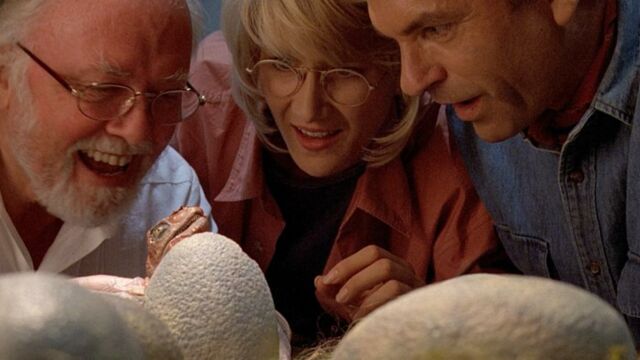Scientists unearth fossilized dinosaur eggs, here's what they may have looked like in the Jurassic era (PHOTO)

Although they disappeared millions of years ago, dinosaurs continue to reveal themselves to us thanks to fossils. A recent discovery has shed some light on what the eggs looked like.
Yet dinosaurs, T-Rexes, diplodocus and the like continue to fuel the common imagination. What they looked like, how they hunted - these are just some of the questions that inspire young and old alike. New advances now reveal what the eggs of the first dinosaurs, those of the Jurassic era (between -201 and -145 million years ago), looked like, and what their texture was like.
Discover our latest podcast
The fossils have spoken
White, blue, pink and even mottled, bird and reptile eggs come in all shapes and sizes. While most are smooth and fragile, given the super-characteristics of dinosaurs, one could only suspect that theirs would not fit into this category. The recent discovery of three adult dinosaur skeletons and five egg nests containing embryos has taken us a step closer to understanding the physical and sensory representation of their eggs.
More under this adMore under this adThe fossils and embryos were discovered in China's Guizhou province. The fossils belong to a new species of Sauropodomorph, thought to have lived in the Lower Jurassic era, around 180 to 200 million years ago. The fossils display features never before seen in other Sauropodomorphs studied. One of these is the leathery texture of their eggs.
Read more:Never-before-seen skeleton of a giant dinosaur discovered in Argentina
Recreating dinosaurs?
Usually, most relics come from the Cretaceous. Scientists are wondering whether it's because of the "leathery" texture of eggs, less well equipped to fossilize, that so few have been found. This is a major step forward. This new specimen has been named Qianlong Shouhu, a Chinese name meaning "guardian of the long dragons".
More under this adMore under this adBy analyzing the embryos still inside the eggs, the scientists realized that they were in the final stages of development, ready to hatch, occupying all available space with their heads turned upwards. With all the progress made in biochemistry, it's worth asking whether scientists might be able to recreate dinosaurs. If the idea is anything like the script for the film Jurassic Park, it's unlikely that the fragile DNA would have survived all these years. What a shame!
China has found its oldest dinosaur egg nest and the world's oldest dinosaur fossil group preserving both dinosaur eggs and adults in Southwest China’s Guizhou Province. According to one of the experts on the project, the dinosaur fossil group dates back to 190 million years ago… pic.twitter.com/BIGeVmWd2u
— Global Times (@globaltimesnews) November 14, 2023
Read more:Archeologists unearth massive statue dating from Roman times near British motorway
This article has been translated from Gentside FR.
Source used:
Global Times: Earliest dinosaur fossils containing both adults and eggs discovered in SW China’s Guizhou